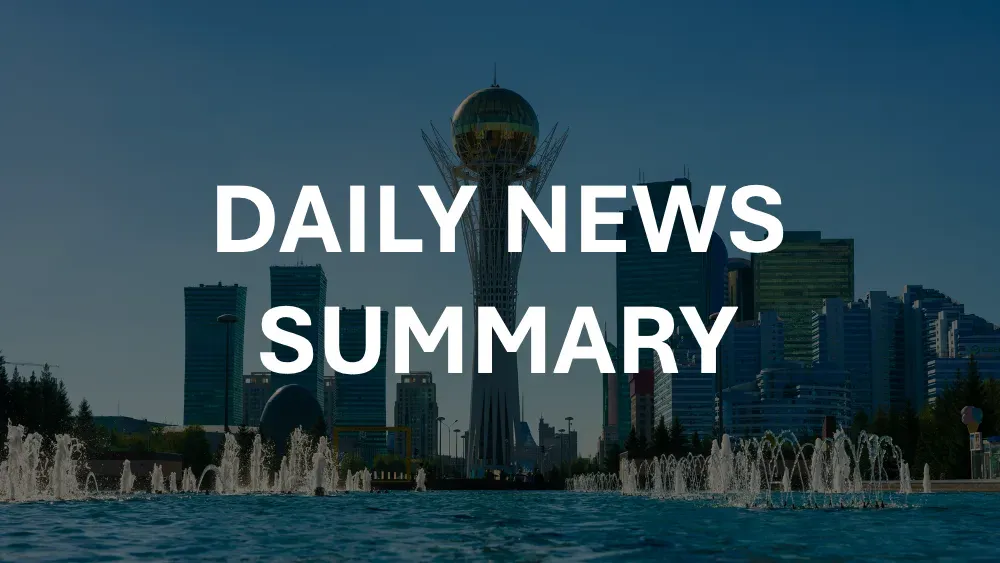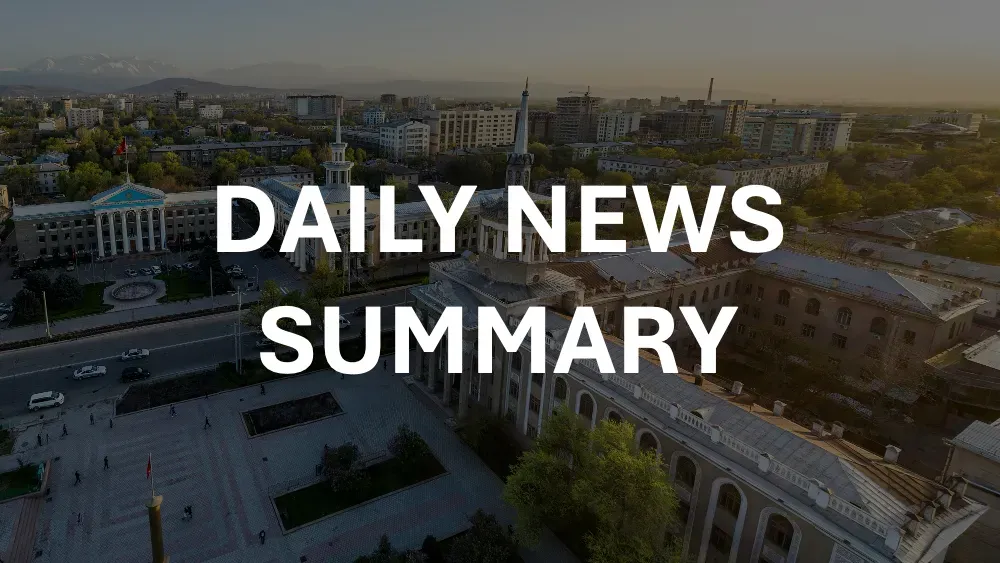📍 Get daily intelligence from Mongolia and Central Asia. Lexica News delivers local news that shapes global decisions—synthesized from local sources international media misses.
Mongolia's Sovereign Wealth Fund Law came into force on May 9, 2024, establishing a three-tiered system that collected MNT 4 trillion ($1.2 billion) in its Future Heritage Fund by December 2024. The fund represents Mongolia's most significant attempt to transform finite mineral wealth into sustained economic stability, arriving as the country derives 90% of its exports and 25% of its GDP from mining activities. International financial institutions document mixed reactions to the fund's establishment, with the IMF welcoming the initiative while emphasizing the need for "strong governance framework" implementation. This analysis examines how Mongolia's sovereign wealth strategy functions in practice, what stakeholders report experiencing, and how the fund's structure compares to established resource revenue management models.
Current Landscape
Mongolia's sovereign wealth fund operates through three distinct accounts designed to address different economic objectives. The Future Heritage Fund functions as a long-term savings mechanism, collecting residual minerals royalty payments and investment returns for international investment until 2030. The Savings Fund receives dividend payments from state-owned mining entities to support citizen healthcare, education, and housing needs. The Development Fund channels resources toward infrastructure and development projects.
The fund's initial capitalization demonstrates the scale of Mongolia's mining sector concentration. Initial transfers of MNT 500 billion came from state-owned enterprises, including mandated 34% stakes from Erdenet Mining Corporation, Oyu Tolgoi, Tavan Tolgoi, and Erdenes Mongol LLC. These transfers reflect the government's strategy to convert mining ownership into diversified financial assets.
Mongolia's mining boom provided the revenue foundation for the fund's establishment. Coal exports reached record levels in 2024, with the economy surging due to 78.5 million tons exported to China. The government targets 100 million tons annually by 2028, indicating continued reliance on fossil fuel revenues. Copper production at Oyu Tolgoi increased following underground expansion, with output projected to double by 2025.
The fund operates within Mongolia's broader fiscal framework where budget revenues from mining more than doubled during 2023-24. This revenue surge contributed to foreign exchange reserve accumulation and enabled the sovereign wealth fund's initial deposits. The government implemented new railway infrastructure, including a 233-km line from Tavan Tolgoi coal field to the Chinese border, reducing transport costs from $32 per ton to $8 per ton.
Documented Experiences
The sovereign wealth fund's establishment process reveals significant transparency concerns among international stakeholders. Business contacts report that "passage of the law was completely lacking in transparency," with stakeholders given "less than a week to comment and review" the legislation. This rapid implementation contrasts with international best practices that emphasize extensive consultation and gradual policy development.
Private sector mining companies document substantial changes to their operational framework following the fund's establishment. Parliament imposed ownership limits on private sector holdings of strategic mining deposits, requiring private holders to transfer "a non-compensated share of no less than 34 percent" and reduce their holdings to maximum 34% by May 2025. These mandatory transfers generated initial fund capital but created uncertainty about future property rights.
International organizations present measured assessments of the fund's structure and governance. The IMF emphasized that "mineral wealth management through the Sovereign Wealth Fund and Development Fund framework should be properly integrated into the fiscal framework and underpinned by clear accountability." This guidance suggests current integration remains incomplete.
Financial performance data shows rapid accumulation in specific fund components. The Future Heritage Fund reached MNT 4 trillion by December 2024, while MNT 495 billion was deposited into the Savings Fund, creating an average of MNT 135,000 per citizen. These figures demonstrate the fund's capacity to generate substantial savings from mining revenues within its first operational year.
Government officials report positive early outcomes while acknowledging implementation challenges. Prime Minister Oyun-Erdene Luvsannamsrai participated in opening the Savings Fund account and emphasized efforts to ensure "openness and transparency of the mining industry." However, specific transparency mechanisms and public reporting standards remain under development.
Stakeholder Realities
Government data presents the sovereign wealth fund as a comprehensive economic diversification tool. Officials describe the fund's mission as facilitating "long-term management of petroleum revenues" and supporting "intergenerational transfer of resources." The government reports revenues from the mining sector more than doubled during 2023-24, providing substantial resources for fund capitalization.
Business community experiences reveal concerns about policy predictability and implementation processes. International investors report uncertainty about property rights and ownership structures following the mandatory mining stake transfers. The rapid policy implementation timeline created limited opportunity for stakeholder input or gradual adjustment to new requirements.
International financial institutions document mixed assessments of the fund's governance structure. The World Bank continues supporting Mongolia's economic governance improvements while emphasizing the importance of fiscal framework integration. The IMF notes the fund offers "important opportunity to create lasting prosperity" but requires proper accountability mechanisms.
Local citizens experience direct benefits through the Savings Fund distribution system. The average MNT 135,000 per citizen deposited in individual accounts represents tangible value from resource revenues. This distribution model follows Singapore's approach to citizen savings funds, providing healthcare, education, and housing support.
Mining sector companies report operational impacts from the ownership restructuring requirements. The 34% minimum state participation requirement in strategic deposits affects corporate planning and investment decisions. Companies describe uncertainty about future regulatory changes and their impact on long-term project viability.
Development partners observe the fund's integration with broader economic policy objectives. The sovereign wealth fund supports Mongolia's New Recovery Policy aimed at achieving economic independence by 2050. This policy framework emphasizes substantial investment spending to reduce resource dependency and build economic resilience.
Understand Mongolia Like an Insider
This analysis draws from extensive research, but the story continues to evolve daily. Lexica synthesizes breaking developments from dozens of Mongolian news sources—from mining policy changes to local protests that never make international headlines.
Our daily intelligence briefs help executives, diplomats, and researchers track:
- Regulatory shifts affecting foreign investment
- Local opposition to development projects before they escalate
- Market dynamics that signal opportunity or risk
- Political developments that reshape the business landscape
Operational Context
The sovereign wealth fund operates through specific institutional arrangements that define its investment and spending parameters. The Future Heritage Fund maintains a mandate for international investment until 2030, following long-term wealth preservation principles similar to Norway's Government Pension Fund Global. This investment restriction prevents domestic market distortion while building diversified international portfolios.
Administrative costs and management structure details remain largely undisclosed in public reporting. Unlike Norway's model, which publishes quarterly performance reports and complete investment holdings, Mongolia's fund operates with limited public transparency about specific investments, performance benchmarks, or management fees. The separation between political oversight and operational management lacks clear definition.
Revenue collection mechanisms demonstrate the fund's dependence on mining sector performance. The fund receives residual minerals royalty payments and dividend payments from state-owned mining entities. This revenue structure creates direct correlation between mining sector health and fund performance, potentially limiting diversification benefits during commodity price downturns.
Spending rules for the three fund components reflect different policy objectives but lack specific fiscal constraints. Unlike Chile's stringent fiscal responsibility law that allocates specific GDP percentages to different funds, Mongolia's spending framework operates through discretionary government decisions. The absence of strict spending rules could enable political interference in fund operations.
Investment governance structures require further development according to international assessment. The IMF recommendation for "strong governance framework" implementation suggests current oversight mechanisms need strengthening. The fund lacks independent board structures or external management arrangements that characterize successful sovereign wealth funds globally.
Operational integration with Mongolia's broader fiscal system remains incomplete. The fund operates parallel to traditional budget processes rather than as an integrated component of fiscal policy. This separation could create coordination challenges and reduce the fund's effectiveness as a macroeconomic stabilization tool during economic volatility.
Regional Comparison
Mongolia's sovereign wealth fund strategy differs significantly from regional approaches to resource revenue management. Kazakhstan's Samruk-Kazyna operates as a $69 billion investment holding company with direct ownership of major national companies across multiple sectors. Kazakhstan's model emphasizes active management of state-owned enterprises rather than pure financial investment diversification.
The scale comparison reveals Mongolia's fund remains modest relative to established regional players. Kazakhstan's fund represents 14.0% of GDP compared to Mongolia's initial fund size of approximately 3-4% of GDP. This size difference reflects Kazakhstan's longer fund operation period and larger economy scale.
Governance transparency varies significantly across regional sovereign wealth funds. Kazakhstan faces criticism for "opaque" operations and limited transparency, similar to concerns about Mongolia's rapid law implementation. Both countries struggle with governance standards compared to Norway's transparent model that publishes complete investment holdings and voting records.
Revenue dependency patterns show similar challenges across resource-rich regional economies. Kazakhstan's fund receives half its revenue from hydrocarbons, while Mongolia's fund depends entirely on mining sector performance. This concentration creates vulnerability to commodity price volatility in both cases.
Investment strategies reflect different approaches to economic diversification. Kazakhstan emphasizes domestic infrastructure and strategic company ownership, while Mongolia's Future Heritage Fund targets international financial markets. The international investment approach offers better diversification but provides limited direct domestic economic development benefits.
Regional economic stabilization functions demonstrate varying effectiveness across countries. Kazakhstan's fund provides economic resilience during external shocks and currency stability support. Mongolia's fund structure aims for similar stabilization benefits but lacks operational experience during economic downturns.
Conclusion
Mongolia's sovereign wealth fund demonstrates rapid initial accumulation with MNT 4 trillion collected within eight months, indicating substantial revenue generation capacity from the country's mining sector. The three-tiered structure addresses different policy objectives through international investment, citizen distributions, and development spending, creating a comprehensive approach to resource revenue management. However, governance transparency concerns, rapid implementation without stakeholder consultation, and mandatory private sector participation requirements create uncertainty about long-term operational sustainability.
The fund's complete dependence on mining revenues represents both an opportunity and vulnerability, as demonstrated by the correlation between record coal exports and fund accumulation. International financial institutions document the need for stronger governance frameworks and fiscal integration, suggesting current institutional arrangements require development. Regional comparisons show Mongolia's fund remains modest in scale but faces similar transparency challenges as other resource-rich countries in Central Asia.
Key uncertainties include the fund's performance during commodity price downturns, the effectiveness of international investment restrictions in preventing Dutch disease effects, and the development of independent governance structures. The absence of strict spending rules and limited operational transparency contrast with successful sovereign wealth fund models globally. Monitoring indicators include fund performance relative to international benchmarks, governance structure development, and the integration of fund operations with broader fiscal policy frameworks. The fund's contribution to economic diversification will depend on institutional strengthening and transparent management practices over the coming years.
Frequently Asked Questions
How much has Mongolia's sovereign wealth fund accumulated since establishment?
The Future Heritage Fund reached MNT 4 trillion ($1.2 billion) by December 2024, while the Savings Fund accumulated MNT 495 billion. These amounts represent initial fund capitalization during the first eight months of operation following the law's May 2024 implementation.
What percentage of mining revenues flows into the sovereign wealth fund?
Mongolia's fund receives residual minerals royalty payments and dividend payments from state-owned mining entities, but specific percentage allocations remain undisclosed. The government mandated 34% stakes from major mining companies, providing substantial initial capitalization.
How does Mongolia's fund compare to other resource-rich countries?
Mongolia's fund represents approximately 3-4% of GDP compared to Kazakhstan's 14% of GDP and Norway's fund exceeding 100% of GDP. The smaller scale reflects Mongolia's recent establishment and smaller economy size. Governance transparency lags behind Norway's standards but resembles Kazakhstan's approach.
What investment restrictions apply to the fund's different components?
The Future Heritage Fund must invest internationally until 2030, preventing domestic market interference. The Savings Fund supports citizen healthcare, education, and housing through direct distributions. The Development Fund finances infrastructure projects but lacks specific investment guidelines.
What governance oversight exists for fund operations?
The IMF emphasizes that "strong governance framework" implementation remains necessary. Current oversight structures lack independence and transparency compared to international best practices. The fund operates without external management or independent board arrangements.
How do citizens benefit directly from the sovereign wealth fund?
The Savings Fund provides average MNT 135,000 per citizen in individual accounts, following Singapore's model for healthcare, education, and housing support. This distribution represents direct resource revenue sharing with the population.
What risks does the fund face from mining sector dependence?
The fund's revenue streams depend entirely on mining sector performance, creating vulnerability to commodity price volatility. Mongolia derives 90% of exports from mining, limiting diversification benefits compared to countries with broader revenue bases.
Track Mongolia's Critical Minerals Sector with Local Intelligence
The rare earth story exemplifies why local sources matter. While international media reports MOUs and ministerial visits, Mongolian outlets cover the community protests, water disputes, and regulatory changes that actually determine project outcomes.
Lexica delivers what you're missing:
- Daily briefs at 7AM Ulaanbaatar time covering 40 top stories from politics to economics
- Full-text synthesis from sources in Mongolian
- Searchable archive to track how today's announcements connect to yesterday's promises
- Multi-country coverage across Central Asia for regional context
Whether you're evaluating investment opportunities, monitoring supply chain risks, or analyzing geopolitical developments, local intelligence reveals what international headlines obscure.










